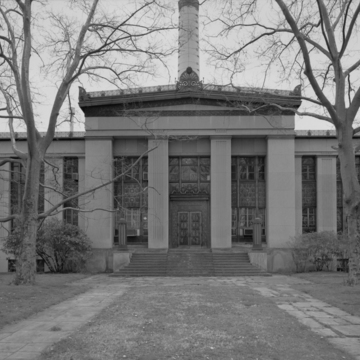Henry Hornbostel and ALCOA's in-house architect Pierre Richard Leonard Hogner (c. 1887–1966) designed the limestone-faced research laboratory overlooking the company's plant made of the local industrial, cream-colored Kittanning brick. The central
You are here
ALCOA Research Center
1928–1930, Pierre R. L. Hogner and Henry Hornbostel. 600 block Freeport Rd.
If SAH Archipedia has been useful to you, please consider supporting it.
SAH Archipedia tells the story of the United States through its buildings, landscapes, and cities. This freely available resource empowers the public with authoritative knowledge that deepens their understanding and appreciation of the built environment. But the Society of Architectural Historians, which created SAH Archipedia with University of Virginia Press, needs your support to maintain the high-caliber research, writing, photography, cartography, editing, design, and programming that make SAH Archipedia a trusted online resource available to all who value the history of place, heritage tourism, and learning.















